The Vive Pro 2 is HTC’s latest PCVR headset that is aimed at enterprise customers and VR enthusiasts alike. It promises a wider 120° FOV and high-end VR experience thanks to its upgraded resolution of 2.5k * 2.5k pixels per eye and a higher 120hz refresh rate. Now does HTC keep those promises and is the device worth the 799$ asking price for the headset only?
The answer will depend on many factors, one being from which headset you want to upgrade from and what is important for you in a headset.
The Vive Pro 2 is a solid update as far as visuals are concerned but other than that plays it safe and does not stray away too much from the original Vive Pro formula. For some parts that’s good, for others it is quite hard to understand in a competitive environment that pits it against innovative headsets like the Valve Index or the Reverb G2.
Build-quality & Comfort
Let’s start with the basics. HTC has not made any design-changes. From outside you could not tell the Pro 1 and 2 apart if it was not for some slight color changes. That was probably the most economic way to bring the device to market, but that also does not help to make the device more exciting from a consumer’s standpoint.
However, the Pro 2 is just as sturdy and well built as its predecessor and it has just as many options to adjust it to the individual user. We have manual IPD adjustment with a range from 57mm to 70.5mm and there is eye relief so glasses wearers can make more room to wear their glasses within the headset.
The headstrap allows users to quickly adjust size with an adjustment knob and I personally prefer this over velcro solutions like the one of the Reverb G2 any day.

For the headphones HTC actually did make a change. They are still on-ear but at least the part that touches the user’s ears has been updated and feels better, especially for longer play sessions. This has to compete against the now industry Gold Standard of the floating Valve Index headphones though and we will get to that discussion when we talk about audio in this review.
Overall, the build quality is great. I especially want to point out the cable management here. It is well thought through and the cable is being led from the headset itself to the back of the headstrap in the most unobstructive and elegant way.
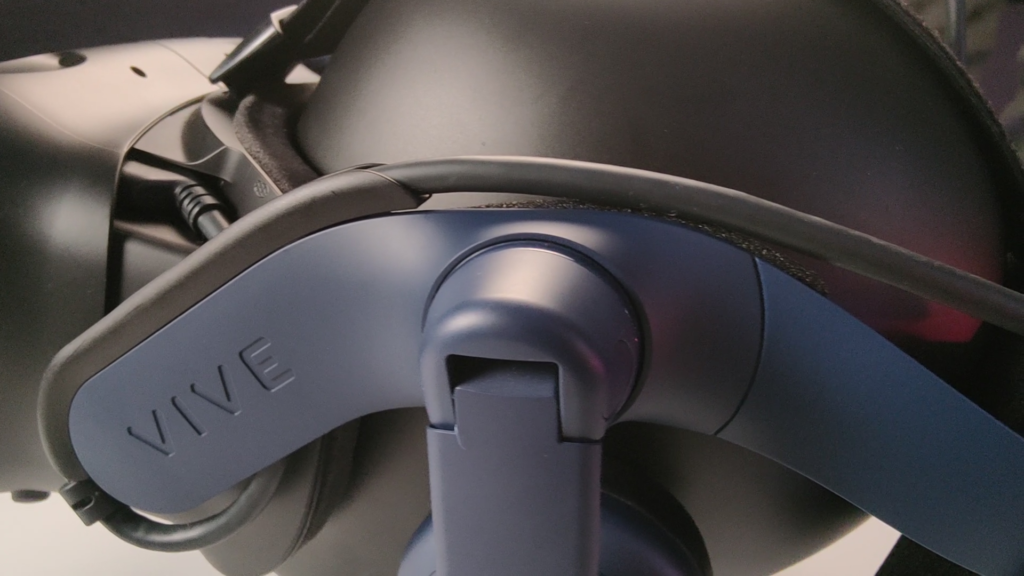
Talking about the cable, the Pro 2 is also compatible with the Vive Wireless module, so if you prefer wireless gameplay that is possible as well at an added expense of $349 and I will review the wireless performance in a separate review.
Since design-wise nothing has changed, the Pro 2 is also compatible with the HTC Vive Facial tracker which should be good news for anyone that is interested to use it for social VR experiences.
Comfort of the Pro 2 is great. Thanks to the excellent headstrap the device sits on your head in a balanced way. There is no front heaviness and cushions are as soft and accommodating as ever. Wearing the Pro 2 feels like putting your head into a comfy sofa. People coming from headsets that do not offer such lavish cushioning might have to get used to that kind of comfort first.
Visuals
But now let’s get to the upgrades! Virtual Reality is all about immersion and the visuals play a major role in that. HTC has massively upgraded the Pro 2 in this department. The Pro 2 now features two LCD panels with a resolution of 2.5k by 2.5k pixels per eye that boast a refresh rate of 120hz. And boy do these panels look great!
As was to be expected, the screen door effect is now truly a thing of the past and there are no ugly pixel gaps left that would remind us of looking at a screen instead of just feeling immersed. The pixel density per degree that headsets like the Pro 2 or Reverb G2 offer seems to be the sweetspot for making that happen. Virtual worlds simply look fantastic within the Pro 2 and the resolution allows for sharpness and clarity that so far only the Reverb G2 could offer. VR veterans coming from all other major headset companies will without a doubt perceive this bump in the visual department and will adopt it as the new standard quickly.
The panels don’t just offer a high resolution, they also offer vibrant colors and high contrast. This is in fact the best LCD panel in terms of color reproduction that I have seen in a VR headset yet. The only panel that comes close in terms of colors for an LCD panel is that one of the Reverb G2, but if I had to chose the better one, I’d still give it to the Pro 2 because colors simply have a bit more intensity and contrast is a bit higher which makes for really dark blacks. It is still not an OLED panel, but LCD has actually made quite some improvements as far as contrast is concerned. If you are coming from the Valve Index, you will without a doubt directly be able to tell that the colors of this panel are superior, same goes for users that come from the Pimax headsets that sport an LCD panel.
FOV
Field of View! Oh yes, we always wanted more and now we have finally been heard! Does the Vive Pro 2 really deliver an FOV of 120° horizontally that is wider than that of the Valve Index? Yes it does!
But without a doubt I foresee quite a bit of controversy here because HTC chose an unfamiliar FOV ratio. So far in VR headsets the horizontal FOV kind of matched the vertical one. We looked into virtual worlds through oval windows, perhaps comparable to a 4:3 TV set. Now HTC expects us to learn a new trick and adapt to more of a wider 16:9 like ratio, because the vertical FOV is visibly smaller than the horizontal one. Also, the window into VR is now more squarish than oval and that does take getting used to.
So how large is that FOV then?
Using Risa2000’s hmdq tool we can find out the FOV that is actually rendered for the device, so that is the de facto maximum that you could see in the very best case. For the Pro 2 that is 117.25 deg horizontally and 96.54 deg vertically. For comparison, here are the values for Index and Reverb G2:
Pro 2: 117.25 deg (h) – 96.54 deg (v)
Reverb G2: 98.85 deg (h) – 90.85 deg (v)
Valve Index: 108.06 deg (h) – 109.16 deg (v)
How many degrees of FOV are being rendered and how many you actually see within the headset will also depend on how well optimized the device is and on your individual anatomy. I have a very standard IPD of 64mm and when I actually look through the device and measure how much I see using the TestHMD tools, I get to 114 deg (h) and 90 deg (v), using the standard facepad that comes with the device. That is better than the 108 deg (h) I see in the Index horizontally, but worse than the 100 deg (v) I see vertically there.
My very first reaction when I looked through the Pro 2 was: I am getting less FOV! I could not appreciate the wider horizontal FOV at all. Actually I had the feeling I would even see less. It honestly speaking felt weird for me to see that unfamiliar FOV ratio. It felt like looking at a 4:3 screen all my life and then looking at a 16:9 screen for the first time. My knee-jerk reaction was to dismiss the device and I am pretty sure we will see that initial knee-jerk reaction play out to its fullest hyperbole potential on YouTube as soon as the device drops! (“OMG, I AM LOOKING THROUGH A MAILBOX SLOT!!! SMALLEST FOV EVER!!!”).
However, I did give the device a chance to grow on me and that was a very good decision. On the second day, it did not feel weird to me at all anymore and I could appreciate that in fact I can see more of the virtual worlds than before. It is still unfortunate that we do not see that FOV increase vertically as well so we would not have to get used to this new kind of ratio.
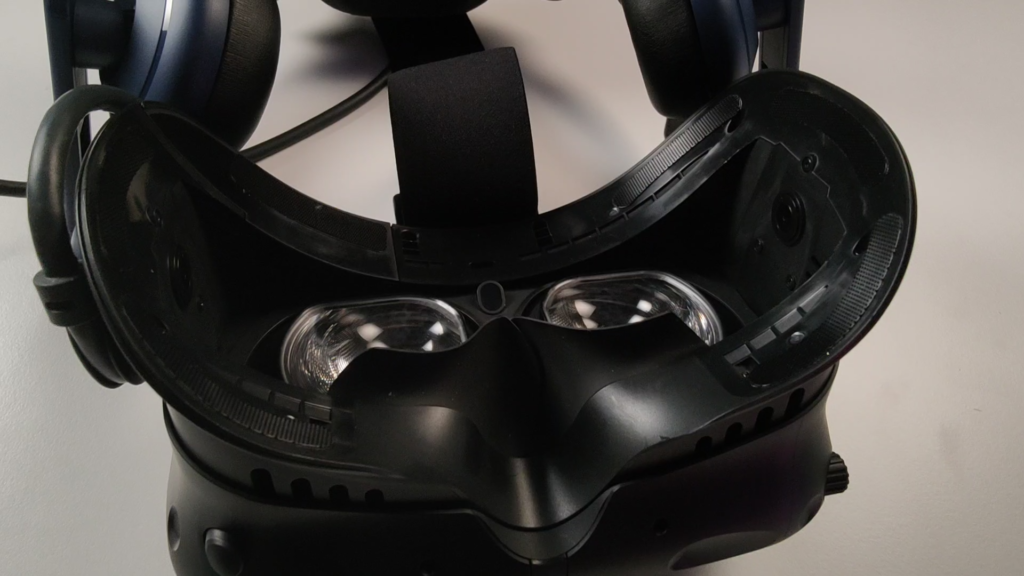
My concerns about the FOV ratio completely faded though when I found out that there is plenty of room to increase the visible FOV by getting my eyes closer to the displays. The facial padding that comes with the device is kind of thick and therefore I simply replaced it with a thinner VR Cover and then I had the experience I was hoping for! I could finally enjoy the wider FOV to its fullest extent. With that thinner facepad I then measured an FOV of 116 deg (h) – 96 deg (v) and that did make a huge difference. So, FrankenFOV away, dear modders! For my modding, I used the Cool XG Foam form VR Cover. It is actually for Quest 2 but fits well and is really slim for much FOV. (US-Link, EU-Link, INT-Link)
You will even get better results here than modding the Reverb G2 using thinner facepads. So after modding, you get a visual experience that plays in Reverb G2 territory with a wider FOV than the Valve Index, and that is quite a proposition for all the people that care about visuals more than anything else in VR.
Lenses
After having used the same lenses for years now HTC finally introduces new ones for the Pro 2. We are now looking through a double stacked pair of lenses, a technology that we know from the Valve Index. Just as with its direct competitor, this lens design allows for a wider field of view.
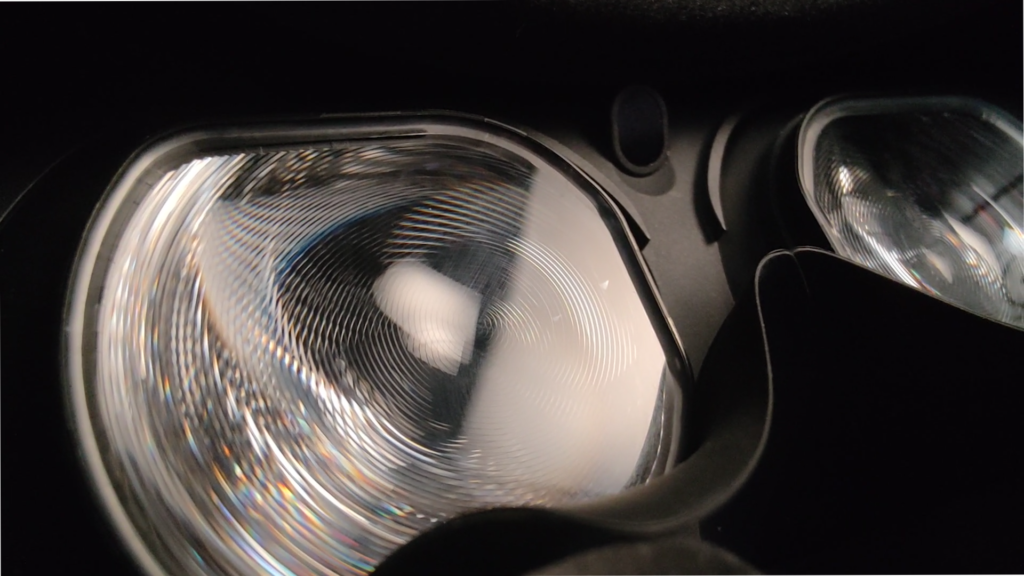
Unfortunately though Fresnel lenses with their typical concentric rings are being used once again. And as we know, those are prone to god rays. For non double stacked lens designs like those of the Reverb G2 or the Oculus headsets, glare has already been reduced to a degree that it is not a big issue anymore. For the double stacked design of the Valve Index though, we had huge problems with glare. Unfortunately, the Pro 2 also is plagued with similar problems. The glare is not as pronounced as in the Valve Index, but it is still a problem nonetheless. If the godray problem of the Valve Index put you off, you won’t feel differently here.
In standard playing sessions, you will likely not be bothered by it, just as it is the case with the Valve Index. In high contrast scenes you will see glare though, like white text on a black background. In these situations the glare will take away from the beautiful clarity of the panels and that is also the reason why in direct a/b comparisons with the Reverb G2 I often prefered the picture quality of the latter, simply because there is less lens glare. So if you are used to the Reverb G2, you will see more lens glare, if you are used to the Valve Index, you will see a little less, but in general you know what to expect.
Also in terms of sweetspot we unfortunately do not see any improvements. In order to get to the position that will grant you the sharpest picture quality over the complete panel, you will need to adjust the headset for quite a bit. If you are coming from headsets with better sweetspots like the Oculus ones, you will find that you probably need a bit longer to find that ideal position.
However, in direct comparison to the Valve Index, I do not see any disadvantages here since also with that headset you will need some time to find the perfect adjustment.
Once you are in that sweetspot though, you will get a clear picture.
Also the edge-to-edge clarity is on par with the Index. Like with all Fresnel lenses there is a certain amount of clarity degradation the further you get to the peripheral areas though and to get a completely perfect picture quality we simply need to go away from Fresnel lenses and reintroduce the clear aspheric lenses back to VR! The first company to do that for the consumer market will without any doubts not only get lots of goodwill but also the dollars of many happy customers.
So overall, the Pro 2 is a very solid visual upgrade that scores with its fantastic high resolution panels that offer best in class colors in that display category. The wider FOV is a nice add-on that especially shines when you are able to get your eyes as close as possible to the lenses. The viewing pleasure is only clouded by glare in high contrast scenes caused by lenses that do not improve on the Valve Index double-stacked lens formula.
Audio
The Valve Index has introduced a stellar audio solution with its floating headphone design that is now the de facto Gold standard. And any headset that plays in the high-end enthusiast market must compete with that standard.
The Pro 2 offers standard on-ear headphones that have been improved in terms of their design. They look better and more importantly feel better on your ears now also for longer playing sessions.
I have already gotten used to not having headphones touch my ears and I personally do prefer the Index solution. However, I can also appreciate the notion that some people want to be shut off completely from the real world. For these people on-ear headphones that block noise coming from the outside are preferable and the Pro 2 offers such a solution.
The audio quality itself will be good enough for the majority of consumers. I could tell that the Valve Index headphones offer a better audio quality, especially in the bass department, but the Pro 2 headphones also did not put me off. Audiophiles will without a doubt prefer the Valve Index solution though.
The headphones are an acceptable audio solution but HTC shows no ambition here to actually compete with the best solution that is on the market now.
Microphone
Oh.My.God. It is hard to express how disappointing it is to see that HTC again did not manage to improve the microphone quality. In every single one of my previous Vive headset reviews I have pointed out that the microphone is just utter garbage. It was already quite unbelievable for me that the company did not improve the microphone from Original Vive to Vive Pro, but missing that upgrade again here is quite honestly inexplicable. The problem is not so much the audio quality itself, but the missing pop filter. Any “p” sound will result in loud and ugly pop noises that will easily identify you as a Vive customer in social VR situations. That is especially bad for enterprise customers that want to use the headset for Virtual meetings and quite frankly at this point simply embarrassing for HTC.
I have tried to improve the pop noise problem by attaching windfilters for camera microhphones and the results are actually pretty good. Those will cost not more than a dollar and will allow you to interact with other people in VR without giving away that you are using a Vive headset.
This is a really simple mod and the results are pretty good! You can buy those little self-adhesive pop filters here. This is the result:
I have reached out to HTC about the microphone issue and I was told they will try to improve the situation on the software side. That is the same answer I got when I reviewed the orignal Vive Pro so I am not hopeful here. HTC must pro-actively find a solution for this problem. I suggest at least putting a free pop filter in the box, as embarrassing as it might be.
Controllers
The Vive Pro 2 does not come with any new controllers. If you go for the full package at $1399, you will receive a pair of base stations needed for tracking and the Vive Wand controllers.
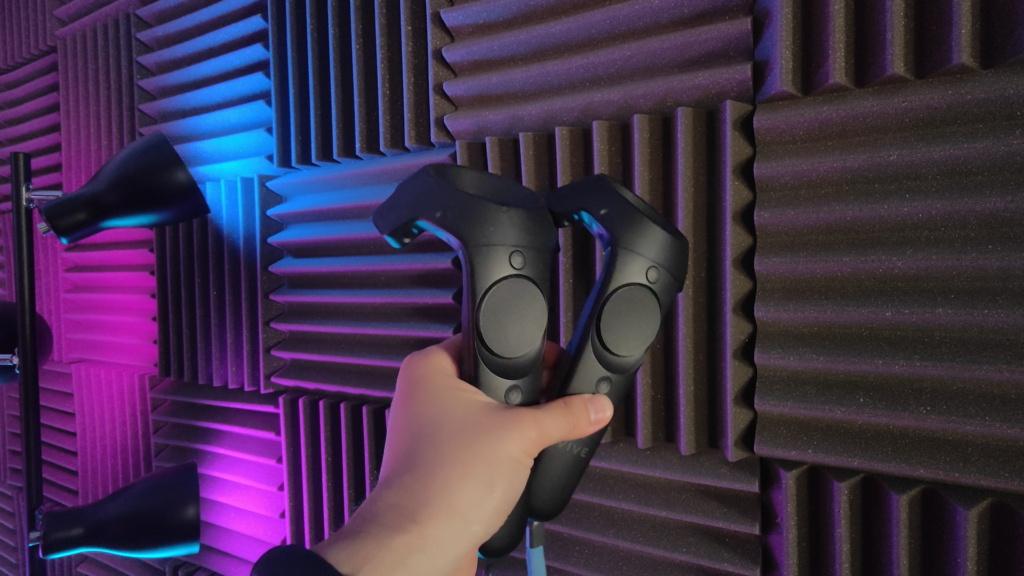
The Wand controllers have been around since the very first Vive came out and I will not review them here again. For business customers they should do the trick but gaming enthusiasts will without a doubt use the Valve Index controllers instead which are fully compatible.
I was at first disappointed when I learned that we would not get any new controllers with the Pro 2 but considering the fact that this is most likely only interesting for enthusiasts anyways who upgrade from an existing lighthouse compatible headset, it is understandable. HTC told me a new controller offering for gamers would unlikely add any value to the existing eco-system.
That being the case I would have hoped for HTC to work together with Valve to offer the Pro 2 in a bundle with those Valve Index controllers for customers who are new to exactly this eco-system.
Performance
With all those pixels that need to be rendered, you rightfully ask yourself now: can you actually run this beast? The answer is YES, you can! At least that is what I deduct from my tests conducted on my RTX3080 system (no surprises here) but also on my weaker GTX1080ti machine. In both cases the Pro 2 ran very well and actually better than my Reverb G2.
On my RTX3080 the Vive software allowed me to choose from 5 settings:
Performance (2448*1224, 120hz)
Balanced (3264*1632, 90hz)
High (3672*1836, 90hz)
Ultra (4896*2448, 90hz)
Extreme (4896*2448, 120hz)
For my tests I chose the Extreme setting since I wanted to max out the Pro 2. I was pleasantly surprised by how well all my games were running at this maximum fidelity. I could play Half-Life: Alyx at its highest graphic settings at a constant 120 fps and it simply looked stunning.
We know that Half-Life Alyx is a very well optimized game that runs well on lots of machines so therefore I also tested more demanding titles such as Xplane 11 or Project Cars 2. For both games I managed to achieve a very respectable 60 fps, a feat that I could not pull off with my Reverb G2 at full visual fidelity on that same system.
In order to allow for better comparisons with other headsets, I ran the OpenVR Benchmark tool. For all readers who are not familiar with that benchmark: it is freely available on SteamVR and will render a very demanding scene that is designed to put the GPUs and the headsets connected to them to the test.
For the Vive Pro 2 I achieved a very respectable 33.6 fps on the RTX 3080. Compared to the 28fps that the Reverb G2 scored on the same system, you can tell that the Pro 2 performs quite a bit better than the Reverb G2. How is that possible? The Reverb G2 renders quite a higher resolution at 100% SS for its frame buffer and therefore is not quite as performant as the Pro 2. If you own an RTX 3080 you could run the OpenVR benchmark tool with your current VR headset and compare your results with the ones achieved with the Vive Pro 2.
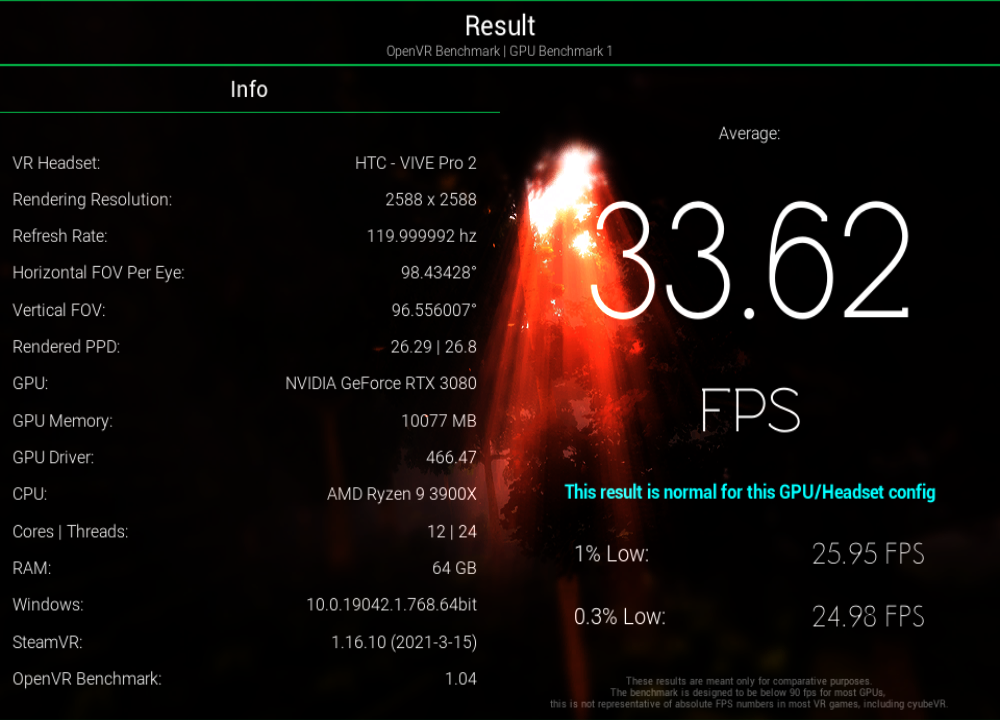
On my GTX1080ti system, I could not choose the Ultra and Extreme option, so I went for the “High” setting. Of course I also ran Half-Life: Alxy here. Even at that lower resolution I saw a nice bump in visual fidelity over the Valve Index. The high fill-factor simply makes the difference and will eliminate any screen door effect, no matter if you run it at very high resolutions or not.
I was pleasantly surprised that I could run Half-Life: Alyx at a constant 90 fps on that older machine, with visuals that were absolutely gorgeous, still.
To be able to test the performance more generally, I also ran the OpenVR benchmark here. On that 1080ti machine the tool was able to render an average of 38.49 fps which was even a better result than I could get on the 3080 machine, at a lower resolution of course though.
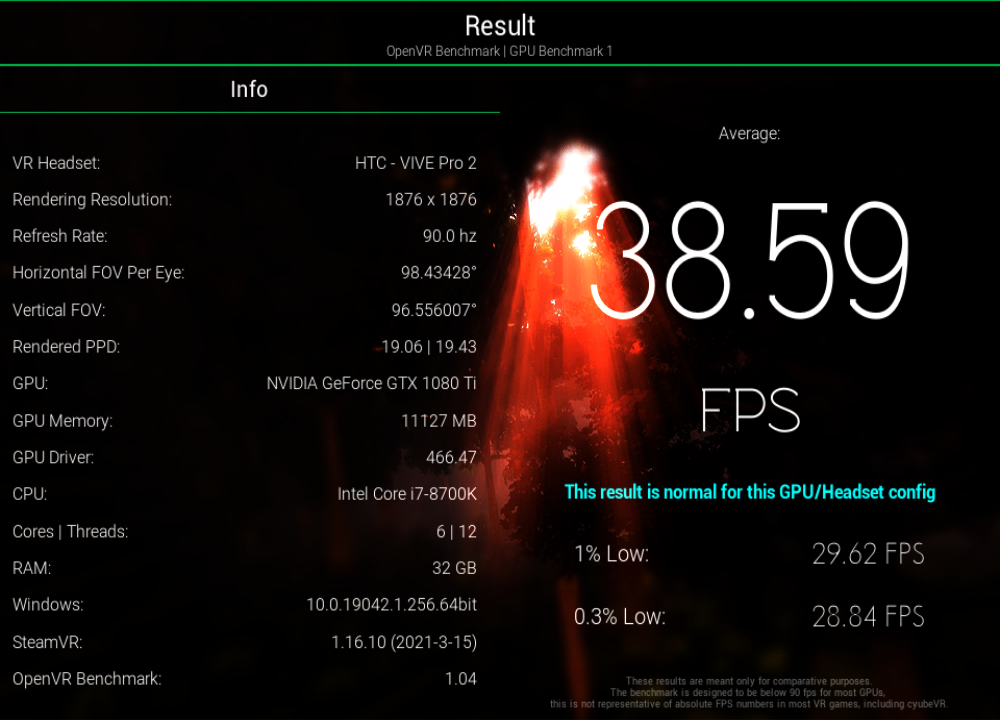
If my results could be replicated on similar setups it would mean that the Pro 2 is an exciting upgrade proposition for enterprise customers and VR enthusiasts that want to enjoy wider FOVs and visuals without screen door effect using their existing setups, without the need to get faster GPUs. And that is truly a great proposition, especially in times like these, when it is hard to get by a new GPU.
Conclusion
The Vive Pro 2 is a solid upgrade in terms of visuals and FOV that many customers will enjoy. You can expect Reverb G2 level visuals on a wider than Valve Index FOV.
HTC played it a bit too safe here though to call the Pro 2 an “exciting” or “must-have” update: we didn’t get a facelift for the design (bearable), but more importantly HTC did not have the ambition to also compete for the best audio solution and they completely dropped the ball on the microphone (again).
For VR enthusiasts that are willing to mod that microphone though by adding a $1 pop filter and that do not insist on the floating Valve Index headphones, the Vive Pro 2 is a solid upgrade that will not force them to upgrade their existing GPUs. But once the high-end GPUs will be more broadly available, the headset will give you these “Ultra” and “Extreme” graphic settings to really show you what it can do.
In order to help you make a more informed purchasing decision, I will give you my advice based on the headset that you currently own.
If you own a Valve Index and are happy with it, I am not going to tell you that your Index is not good enough anymore. The Index is a hell of a headset and the panel still looks good enough, if you are not already used to higher resolution screens like that of the Reverb G2. It has a microphone that is so much better and an audio solution that still is unmatched. If you deeply care about that microphone and the floating headphones, sit this one out.
However, if you ever so enviously looked over at the Reverb G2 crowd and also wished to enjoy these incredibly sharp high-resolution panels with even better colors, you can now have that together with the tracking solution that you love and an even wider FOV. I myself am in exactly that category. I really enjoyed the Index, but the Reverb G2 has spoiled it for me in terms of visuals. I am therefore glad that we now have a lighthouse version with an even bigger FOV, therefore I will personally keep my pre-order for the Pro 2. I already bought a pack of 10 glue-on pop filters, so I will be alright with that microphone.
If you own a Reverb G2 though the situation is a bit different. You are already used to that high-end visual experience in VR and you even have better lenses with less glare. Moreover, if you do not own Lighthouse base stations and controllers, this upgrade would cost you $1400 for sure and that is quite a sum. If you cannot stand Reverb G2 controllers and look for better tracking and a wider FOV then that is the price you have to pay though. But perhaps you still have base stations and controllers lying around?
For owners of a Vive or a Vive Pro the Vive Pro 2 is a really good and even recommended update. Without the need to update your GPU you will get a much better visual fidelity and a wider FOV. For Vive Pro users who are used to their device running hot, you will now get a headset that is not plagued by this problem. However, you will feel the change from Oled to LCD, even though this is a really good LCD panel. But still, the blacks of OLED headsets are still unmatched by any LCD panel up to date.
If you own any of the Pimax headsets for their huge FOV then for the first time since the Valve Index, you might actually want to explore this new option though. Especially when modded, the Pro 2 can give you an FOV that will get into the FOV territory that you enjoy most, completely without any distortions.
In terms of visual quality the Pro 2 trumps all the Pimax offerings. The only Pimax headset that can compete in terms of pixel per degree is the 8 KX, however the colors are way better on the Pro 2 panel and you get that with 120hz.
If you own a Quest or Quest 2, and you want to get into the high-end PCVR market, you might consider picking this one up. You will get way better visuals, colors and FOV, however the expenditure is most probably too high, and you could rather just go for a G2 or an Index instead. Probably just keep that Quest 2 though and wait for the Quest 2 Pro.
Overall, the Vive Pro 2 is a solid update. Not an exciting one, but solid nevertheless and it will help us to bridge the time until we enthusiasts get that OLED, high-def beast that uses aspherical, no-glare lenses, that we are all dreaming of.
Sebastian Ang, 28th of May, 2021
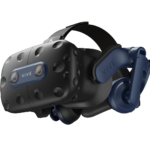
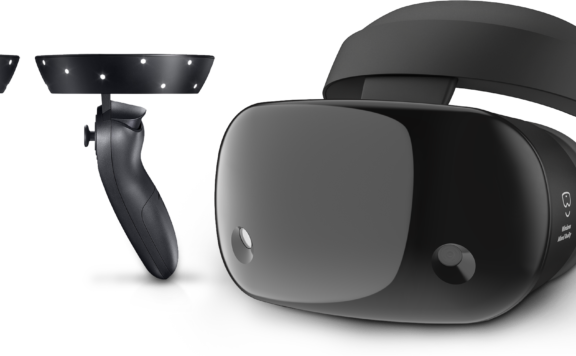
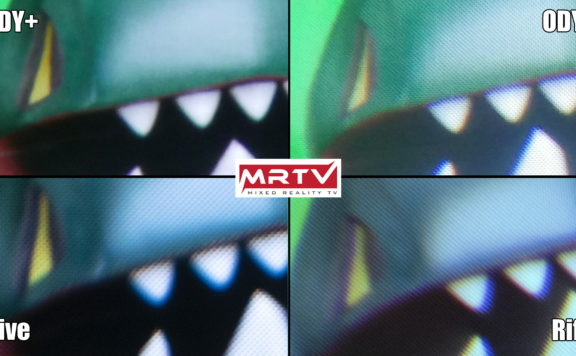
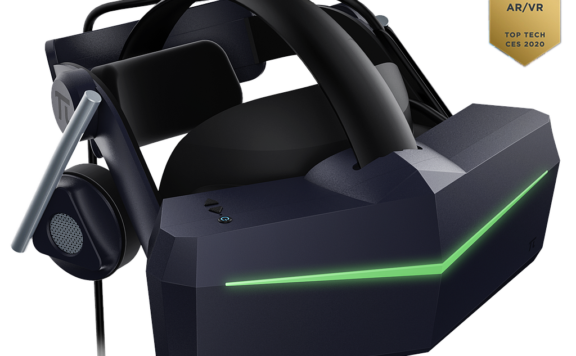
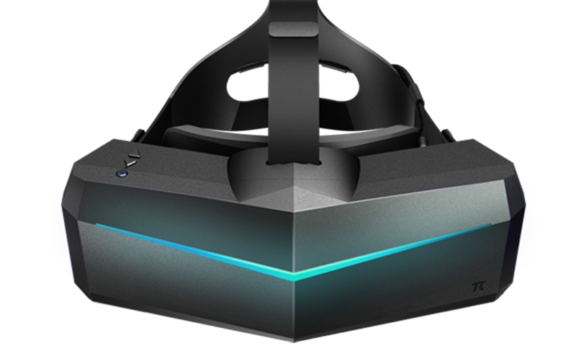
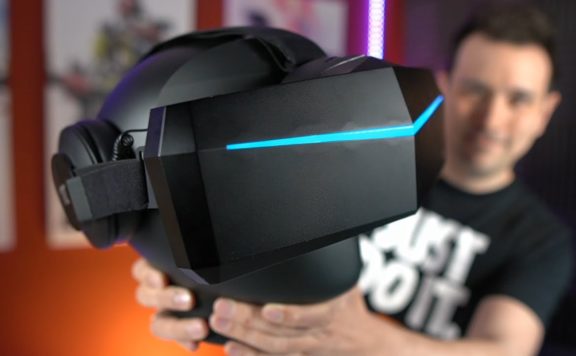
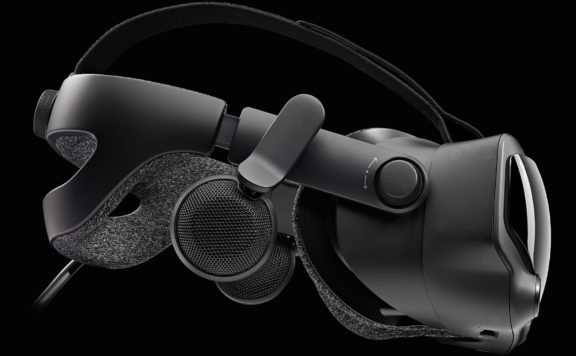
Taylor
Can you comment on the sweet spot with regards to the G2? Was it comparable? Bigger/smaller?
Also, why does the G2 have A MUCH better PPD in openVR benchmarks? G2 shows 33 and vp2 shows 26.
Is the clarity and resolution worse on the vp2??
Sebastian Ang
HI Taylor. In direct A/B comparison, I the picture quality of the G2 is a tad sharper. I believe that has to do with the better lenses of the G2 and the better PPD. Again, sweetspot is on Index level. It is hard to say what is better or worse, it absolutely depends on how well your head fits into the G2 for example. For me, the sweetspot of the G2 is really good.
John
Hey, seb, just want to hopefully explain why this is only because you are literally rendering ~50% more pixels on the Reverb G2 with SteamVR set to 100% render resolution for both headsets.
The Vive Pro 2 at 100% is 2588 x 2588 per eye = 6,697,744 pixels
The Reverb G2 at 100% is 3184 x 3104 per eye = 9,883,136 pixels (47.5% more!)
You seem to understand this, but don’t seem to understand how much of a difference this will make in perceived visual quality. The Reverb G2 is not “wasting” these extra pixels in the SteamVR -> WMR compositor buffer copy process, like you imply. All these extra pixels rendered go towards supersampling and making everything seem sharper and less aliased.
Just as the valve index rendering at approximately 200% panel resolution at SteamVR 100% is not being “wasted”. Valve prefers to do this to allow the pixels in center to match up as close to 1 to 1 as possible after lens distortion correction. You would have to do the exact same thing and default render at 150%+ on the vive pro 2 for a similar effect; htc has opted to keep the default lower though so out of box performance is better for most people.
In fact, the Reverb G1 was almost exactly at 2k x 2k per eye at steamvr 100% instead of 3k per eye like the G2, even with the exact same panel dimensions, as HP also wished to make the G1 better performing out of the box as well. Then the release of the 3000 series meant they felt more comfortable releasing the G2 with default 3k per eye at steamvr 100%.
People misinterpreted that one reddit comment by the WMR dev about the buffer copying process to think that this extra resolution at 100% is required to prevent distortion. This is not the case at all, and it is merely a suggestion by valve since super sampling up to about 150% has almost no diminishing returns.
John
To clarify, a valid a/b test would need to total rendered pixel target to be approximately the same between the 2 headsets. This way you can say, at the same gpu load, the Reverb G2 or the Vive Pro 2 looks sharper.
To be at 9,883,136 pixels on vive pro 2, you would need per eye to be ~3143 x ~3143 pixels. This would be equivalent to approximately 122% render resolution in SteamVR settings.
Finally, when you are at 120hz instead of 90hz, display stream compression is being used more to make that signal fit across the cable. Since the Reverb G2 is at 90hz, you can run the vive pro 2 at 90hz for less display stream compression artifacts for a more valid A/B comparison as well.
So I would love it if you could A/B some games with the Reverb G2 at 100% and the Vive Pro 2 at ~122%, with the viveport setting on Ultra, and let us know how it compares! Then we can know exactly how the G2 will compare with the same GPU power.
Thanks!
Stadtreiter
Very good objection, that shows you have a very deep insight in VR hardware. I was allways missing those very rare informations on other reviews, too.
Regarding the Valve Index, you are saying it renders on nearly 200% while being on StamVR 100% SS? Do I understand you right on this? That would mean an even higher impact on render performance compared to other HMDs like the old Vive Pro, that I have never experienced. I have experienced a good plus of image quality by setting the Index to 150% or even 200% SteamVR SS. Is that even possible if I am allready at such a high amount of supersampling over the native screen resolution on 100%? If supersampling has such a big impact on visual quality and it is handled on every HMD in a different way, does it even make sense to compare raw screen resoluton values? I strongly supporting your suggestion to compare different HMDs with several varying SS settings. Like how is the Index on 200% SS compared to a G2 at 100% for instance.
Charles
Wow, great catch.. If that is the case, I suspect many reviewers may currently be missing out on the true clarity this headset has to offer. Please update us on this, Sebastian!!
Owain
It’s possible that the new two layer lenses cause less distortion, and thus require less supersampling to provide a clear image. But it’s also possible that HTC noticed the way everyone freaked out over the high render resolution on the G2 when it released, and arranged with Valve for the target resolution to only be minimally over the native resolution. As you say, only an A/B test with comparable render resolutions will reveal which is the case. Of course, since the Vive Pro 2’s native resolution is higher than the G2’s, it should need an even higher resolution for the best possible picture.
Stadtreiter
I finally found out that the Valve Index is rendering on 140% of the native screen resolution when being on 100% SteamVr SS.
200% native resolution, like posted above, sounded a bit too much to me.
Saying this, I am still stunned about getting better image quality from supersampling “for free”, whereas many people may not use this feature but buying a better HMD instead. Though, I would not be here if not thinking about that, too. 😉
Jukka Muhonen
Does switching between extreme (high res) and performance (low res) affect fov?
Andy
Are you seriously giving your headset a mustache? Ok!
Awesome Review!
Sebastian Ang
Haha, YES!!! How do you like it? And thanks, so glad you like it!
Marco
Tank you, for so professional and Deep review.
Kenneth Hoff
Hi, thank you for the excelent review! How does the glare compare to the original vive/vive pro?
lorsch
Hey Sebastian, thanks first for the detailed review! I enjoyed every part of it, especially the audio test which I haven’t seen done like this before.
One thing I’m wondering however is the compatibility with this HMD with various SteamVR settings. I heard reports that motion smoothing would not work and now I wonder if it also affects other things like setting the refresh rate in the video menu or setting per-application settings like the custom resolution multiplier, Field of View and Throttling Behaviour?
I would appreciate if you find the time to answer these questions.
Anyways, thank you very much for your effort!
Sebastian Ang
Hi lorsch, glad you like my comment! I reckon that quite a few settings are done in the Vive software now. But it is not that the SteamVR settings would not work anymore at all. It is still part of the equation! You can still set per-application settings like before with custom multipliers. I am back home now, so I cannot directly test out the other settings you mentioned, but I will try.
Boogieman
Very nice review. A question on cable management.
When you have ceiling mounted jojo’s you want the cable to go straight up, with minimal bends when moving around and without touching your head.
Did they implement any good way to route it straight up? Like on top of your head?
Matthew
Hey Sebastian, Were you able to set project cars 2 to 60fps on the vive pro 2? Or was it just bouncing around there?
My concern is that they don’t offer a 60hz mode to accommodate games like that. I currently run a 3090 and i9 10900 but even with the reverb I knock it down to 60hz mode to ensure I get smooth and consistent frame rates.
Sebastian Ang
Hi, when I was playing PC2, it looked as if it was locked at 60, and doing Motion Reprojection to get to 120hz. I will try this again to make sure! Thanks for commenting!
Josh
Does this headset have the capability to use SteamVR Motion smoothing or is it Vive motion compensation only? How bad is the latter?
hooti
I’m really interested in this question too.
BTW Sebastian, great review!
Taylor
Another thing I noticed:
The performance testing is questionable that you are getting better performance with the VP2 at 120hz than the G2 at90hz even with VP2 having a larger resolution. It shows the render resolution at 2588×2588 which is less than the G2 render resolution. That is only barely more than the native resolution. Is this a bug in SteamVR since the headset hasn’t launched yet? Shouldn’t render res be close to 1.4x the native?
Sebastian Ang
SteamVR was set to 100% for both devices. The Reverb G2 does render more. I had reached out to HP to find out why and they told me it has to do with the frame buffer. But it was not only this benchmark, also in the actual games I could tell I am getting more fps with the VP2.
Gary Warke
Looking forward to the wireless review. Thinking this could be great partner for Yaw2 motion simulator if wireless is good enough.
I will keep my pre-order.
Sebastian Ang
Hi Gary, thanks for your comment! Very much looking forward to trying out the wireless adapter. Let’s see what it can do!! You are right, this could be fantastic for the Yaw 2!
Owain
Sadly, I expect the wireless to be underwhelming. Vive’s own product page says:
*VIVE Wireless Adapter supports 2448 x 1224 resolution and 90Hz refresh rate when used with VIVE Pro 2. 3264 x 1632 resolution support coming soon.
So the default resolution is a quarter (half H x half V) , 1224 x 1224 per eye, barely more than the original Vive, and they’re promising an update so that it will be 1632 x 1632 (Two thirds H x two thirds V), slightly more than the original Vive Pro and Index. And all at 90Hz max.
John Bennett III
For the occulus facial pad mod, did you need to purchase anything else ? The website says it needs the occulus quest facial plate as well. Do we need a Vive pro 2 plate at all? Or just buy the pads and just Velcro in? Thanks.
Sebastian Ang
Hi John, no, just need to purchase that thing for 19 USD. You do not need the quest facial plate, because you will put this in the Vive Pro 2!
John Bennett III
Great – thanks! I think I’ll need to upgrade from my index…..
Bawstin
This is a great review.
Sebastian Ang
Thank you so much! Glad you like it!
jim
Great review but please can you tell us more about the vice software and how it interacts with steamvr. I’m concerned about having to deal with yet another layer of software settinga and streamvr. Its unclear how all this works and other reviews suggest problems. Looks like viveport account is now compulsory also. HTC software was always buggy and bloated in my experience. Is this still the case? Thanks. Good review.
JobsBao
Hey Sebastian, what is the fov you tested with pimax 8k+ and 8kx with the same standard? I am hesitating to switch from 8k+ to vive pro 2 but considering the much smaller fov.
Sebastian Ang
Hi Jobs, with the 8k devices, I measured 140 deg(h) on “normal” . So still quite a bit more. 🙂 But this experience is honestly speaking much better. 🙂
David
Thank you for the very informative review Sebastian. Nicely done, and I like the combination of a text review with video.
Luciano Falkowski
Hey Sebastian, excellent work. Tip: when benchmarking, it would be helpful to know what was the 3080 performance on the “high” setting, so we could be more aware of the actual gap between GPUs.
Also, for the sim community: is it possible to have the headset only, one base station, without buying the controllers?
What would you advice be for a Samsung Odyssey owner? G2 or Vive Pro 2?
ARandomGuay
Hey Sebastian,
thanks for your very detailed review.
I noticed you said something about 2 lcd pannels, but the vive pro 2 only has a single wide, lcd panel, not two.
Just wanted to let you know 🙂
Thanks
Horstguy
Where do you have that information from? The Vive 2 Pro definitively has 2 lcds.
From https://www.vive.com/us/product/vive-pro2/specs/
“Screen: Dual RGB low persistence LCD”
Cory
Hello Sebastian, Thank you for your indepth review I feel more confident in the device now. I have a preorder for the Pro 2 already and am trying to decide to keep it or not. I am not worried so much about cost at this time, more about making the right choice for the best experience that will last the next 5 years or so. I currently do not have any PC VR systems so I intend to buy everything I need up front. This includes base stations and index controllers. In this situation should I proceed with the Vive Pro, go with G2 instead along with index tracking solution, go with just the standard index bundle with headset, or wait to see what else releases this year?
Mr.Ripcord111
h man dam it is a good head set im thinking about getting one but it is too much so maybe not i have a quest 2 for now and with that mod mice you did im going to do on my quest 2 i watch your content when you did the g2 i was going to get that one but i got a quest 2 in sted
JoJoVR
Great Review, really like it!!!! By the way, can you do HTC Wireless Adapter + PRO2 Review? The latency, visual quality, fps, etc when using the adapter?
Rufuz
Thank you for taking the time and giving the Pro2 a “second chance”. It makes no sense to press the button early at 6:00 AM and have to row back later. Top Review!
Stefano
Hi MRTV. I own an OCULUS Rift S (very happy), thinking of upgrading, have a decent PC ( 2080 Super, might upgrade soon ), cost not an issue, was considering PIMAX 5K Pro … would you recommend this instead? I use VR for flight simulation primarily. I care about both FOV and clarity. What tracking stations should I pair with it? Thank you.
Kim
Hello, nice website btw, looks great.
I tried to see from review, but did not see mention about binocular overlap,Valve index i measured for my eyes was about 85 degrees, but i don’t have vp2.
if it would not be too much trouble, could you measure it using your fov measurement toos and tell what is the degree of it.
you can test it with normal fov tester but just use left eyes measurement line for the right inner edge of the eye.
Thank you for otherwise well written review of the headset.
MikeHotelEcho
Now this is how a review should be, stellar job, Sebastian! Taking your time was definitely the right choice – you want to be best, not necessarily first.
Can you please provide more details about how motion smoothing works in the VP2? It seems like it doesn’t allow to use the SteamVR motion smoothing, but rather provides HTC’s own implementation in the Viveport software.
Also, once the device is set up, is there still the necessity to keep the Viveport software running or does it just configure the driver for the compositor and that’s it?
Simplex
Hi Sebastian, thanks a lot for a written review.
You said you will “go crazy” is HTC keeps the same microphone so I hope we will see it 😉
I have an old “6 mm” facial interface from VR cover for the HTC Vive that I bought many years ago. It improved FoV in Vive. Will this interface work with Pro 2?
Simplex
I cannot edit my post. This is what I have:
https://vrcover.com/product/htc-vive-foam-replacement-6mm/
Ziutek
J have Vive and Vive Pro. The gaskets are of different sizes ! (Vive is smaller than Vive Pro)
Kevin
Hello Sebastian. I have the g2 with index controllers and 2.0 basestations. I cancelled my order on the pro 2😆 if this can replace my g2 i will order it again, but the vive focus 3 does also look tempting. And pimax 8k+ cause it has the big fov. ALL THESE CHOICES🤯😂
Marton
Hi ,
Do you think this headset is better than Reverb G2 with the controllers included?
Azathoth
Sebastian the performance comparison between G2 and VP2 is very interesting and important. could you deepen the topic, showing comparative tests with screenshots both with the OpenVR tool with the same rendering target, and the same frequency and then maybe even the same game in the same section?
Bjørnar Hjelmevold
Audio repair software such as Izotope RX 8 has a de-plosive module, so it is technically possible to develop a software solution to the microphone problem. But those algorithms still won’t take care of wind noise, heavy breathing and laughter, which is something that a physical pop filter has proven for decades that it can fix easily, cheaply, and reliably. With HTC saying they are exploring a software solution, to me that signals internal politics and bad company culture where it has become a touchy subject to address the problem in hardware, probably because a stubborn employee with too much power is not willing to change the current solution and others are not willing to speak up against it.
jericho
Hi Sebastian great website I appreciate all the hard work to get us this review so soon. It has helped to alleviate some of the worries that other reviews left me with. (I have one on order) I do have a worry over Peter Parker playing the piano though I would have thought that his fingers would get stuck on the keys. 😜
Paul
Thanks Sebastian, at last, a hands on review with proper technical tests.
I’m gald I hung in with my pre-oredr before the option disappeared.
The horizontal FOV is a big consideration for me, and you cleared up the controversy. I wondered if it was all down to the distance from the eyes.
Stadtreiter
Very good and a bit surprising review, as I watched the video review of VoodoVR first. Maybe he has got a broken HMD, because his conclusion was very different from yours.
FrankenFOV: You allready said it quite clear, but I wanted to point it out even a bit more… If you can use the FrankenFOV mod or if you even can reach the FOV measured here strongly depends on the users face. For instance, I have an IPD of 64 and quite a normal head, too, but in the Valve Index I can’t dial in the full FOV even with a thick padding. With my prescription lens inserts and even more with glasses, I am at the last and highest distance. So don’t make purchase decisions based on the FrankenVR mod in mind. Maybe you can’t use this.
PS, I am still very happy with my Valve Index’s picture quality. I can’t make out a noticeable screendor effect, even if I try. With my new GPU I am enjoying a ss of 200% and it makes quite a difference. Good tipp not to try the new screen resolutions, if you are still happy with your actual hmd.
Paw30
You did not write a word about the weight of this thing. It looks not only bulky, but also HEAVY.
RadoS
Great review, thanks!
I will stick to my G2 though, even when I do have lighthouses with Index controllers. Sorry 🙂
The biggest benefit for me would be wireless options, but that would lower the excelent visual quality and would cost much more, which is not worth it IMO.
I’m eager to hear more about Focus 3 and Decagear 😉
mark
Disappointed that the wireless not upgraded so seems mostly useless for pro2. Currently the Wireless does 1224×1224 which is 1/4 of pro 2 res and only at 90 hz instead of 120hz. Using wireless you get less than 20%! (134mil px/sec vs 720 mil px/sec) of the possible information. They claim they will up the wireless to 1632×1632 “soon” but that still only gets you 30% (240mil px/sec vs 720mil px/sec). The Pro 1 was losing 35% and with the supposed upgrade will lose nearly nothing, but the Pro 2 wireless will have basically the exact same px/sec as the Pro 1.
Michael
Hi Sebastian, i own a Reverb G1. What do you think about an update to the vive pro2. Same conclusion as update from G2? . Next Question, I will use it only in sitting position (Race Simulator), do i need 2 Basestation or is 1 Basestation enough. For example, for a Pimax Setup, i only need 1 Basestation and not 2.
Thanks for your Review!
Dominic
Hello I got 2 pretty specific questions:
As my eyes are very sensible to light I want to ask if there are any brightness settings for this headset like with my current valve index. The valve index can go down to 20% brightness and with other apps even lower than that which is pretty amazing. Is this possible too with the five pro 2 as I sold my cosmos again because this was not possible there. There was only a slightly different vivid mode and something else that didn’t change much.
Also my second question: is there a way so the headphones aren’t directly over the ear since I do like the fact that with the valve index headphones I can easily tell how loud I am to not distract others while playing.
Thanks for the in-depth review, I personally prefer written reviews like this because I don’t have to go through a whole hour review just to get the most important points. Cheers!
Alan Scott
Do you think it’s worth getting the VP2 as an upgrade for the OG Vive with a GTX 1070?
I was thinking this would be a solid upgrade that would last a while since can upgrade my GPU further down the line. Resolution was the main thing I was holding out on as like the build quality and comfort.
Corellianrogue
In the Vive Pro 2’s settings only “Performace” resolution and “Extreme” resolution are at 120fps. is there a way to run any resolution at 120fps?
greggor
Im interested in this headset for seated SIM racing where wider horizontal FOV is preferable. Can it be used without any base stations or controllers when used like this?
TonyVT Skarredghost
Amazing review, very detailed! Thanks for sharing.
PS I loved the spinning head reference, lol
sam
great review!
Pingback: It’s now possible to try the Vive Pro 2 vertical fov and see for yourself if it’s a downgrade : Vive | Som2ny Network
ERD0C
What aftermarket 6 mm face cushions are compatible with the HTC Vive Pro 2?
It sounds like you were able to make the Cool XG Foam work even though it is for the Quest 2. Are there other brands that will work on the Pro 2?
Goldstandard
Hi Sebastian, great reviews and coverage of this headset. As I said I am in for pre-order as running a 2080 super and coming from an OG/and Pro Vive with index controllers.
I just realised that I haven’t heard anyone talk about one key point. You say you prefer the Index off ear audio, but did you realise the simple point that the Vive Pro audio strap (guessing similar to Vive Pro 2) is also an off ear piece of kit as well? When my kids are in the house and I am on VR, I’ve been REALLY surprised how good the audio is pulled out ONE CLICK and I can still hear what is happening in the house. Best of both worlds for me as it takes care of:
On ear – Immersion
Off ear – Heat and real environment activity.
Try it!
wusaaa
Thanks Sebastian for your review and general work, keep it up!
Just received and tested the vive pro 2. I am coming from Index and G2 (sold the G2 for vive pro 2).
Even without consider the price of the pro 2 (real enthusisast dont care) – its not an upgrade over the Index nor G2.:
I guess everyone thought/ hoped for the PERFECT MIX between G2 and Index – Its NOT!!!
In comparison the Pro 2..
… The Index just wins in every aspect except resolution.
… The G2 produces, like VR-legion already mentioned, a more sharp, clearer image
INDEX for -> fast games (competition and sport)
G2 .. for -> AA games (high quality scenes)
In conclusion I would argue, buy the pro 2 for your HMD-Wall but not for a real improved experience.
.. and hope for the Index 2.
wusaaa
NVM, its pending for approval, sorry for that – delete my last two comment.
Maybe as an improvement for the website: send an info email when comment is queued for approval.
😉 SORRY
James
Nice review.
I think you said you were going to test your old system i7 6700k/7700k and gtx 1080ti with the headset to see how it performs?
Could you also pair the gtx 3080 with your i7 6700k/7700k and benchmark how it performs?
It’s totally relevant as most people like to upgrade only gpu and not entire computer if they don’t have to.
Pingback: HTC Vive Focus 3 BE in-depth review: it's all about business - The Ghost Howls